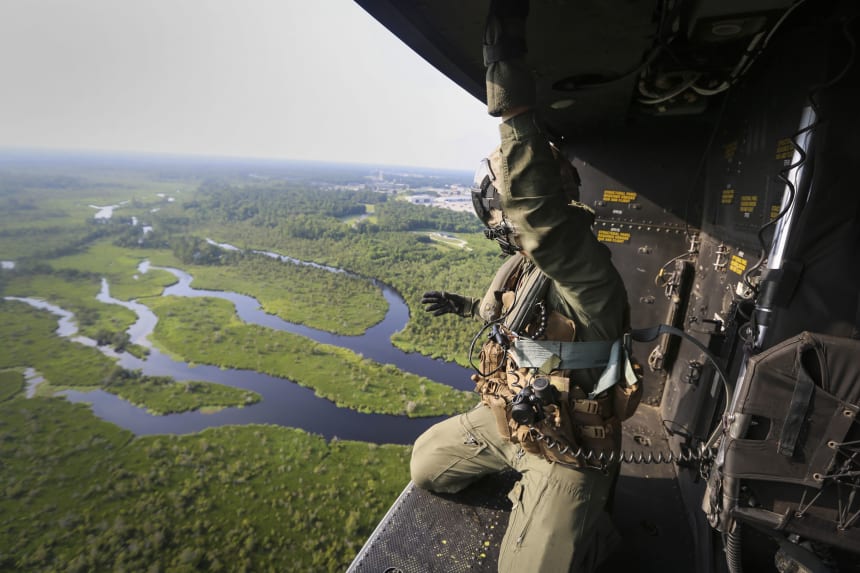Craig Hayes
Friday, November 16, 2018
Thursday, October 25, 2018
Tuesday, September 11, 2018
Dealing With the Aftermath of a Traumatic Back Injury
Spinal Cord Injury Aftermath
Spinal cord injuries change lives, households, and in some cases even entire neighborhoods. When you lose the capacity to completely control your own body, you will need to rely on others for assistance. The people who at one time depended on you may find themselves floundering as they struggle to take care of you. There is no shame in this requirement for support, but it does have functional implications. You’ll need to have support accessing healthcare, attending to insurance coverage problems, and advocating for your rights at work, school, and in your community. A Slidell LA spinal cord injury lawyer is your finest ally in this battle.
The most common cause of a spinal cord injury is a motor vehicle mishap. This cause represents 38.4 percent of cases. Coming in second on the list is falling. This cause is responsible for 30.5 percent of these devastating injuries. Other causes that complete the top 5 are violence, sports, and medical/surgical causes, in that order.
There are around 17,500 new cases of spinal cord injuries each year in this country. Males are the victim in around 81 percent of these cases. On average, victims are around 42 years of age at the time of injury. This is an escalation from the typical age of 29, which is where this statistic stood in 1970. Breaking down the injuries by race and ethnic background reveals something else that is interesting. The majority of cases involve whites who aren’t Hispanic. Blacks who aren’t Hispanic landed 2nd on the list. The majority of the victims are single at the time of the mishap. High school grads represent more than half of the victims. Most spinal cord injury victims were employed when they were hurt.
Considering all of these points, it is easy to see why people who suffer any of these life-altering injuries might choose to look for compensation. This can help them to handle the sharp escalation in expenditures that typically accompany this kind of injury. Cases can be very complex, and having the right representation on your side can go a long way toward obtaining a favorable result. As a personal injury lawyer, Frank J. D’Amico, Sr. is ready and willing to assist you with your claim. Call today! 985.645.0088

High Cost of Care For a Serious Back Injury
Like it or not, medical treatment is a successful business enterprise. That signifies that if you do not have finances or adequate insurance coverage, you might be stuck getting second-rate treatment. Making a legal claim for your injuries enables you to recover the funds you are in need of to pay for pricey medical and life enhancing services and equipment. An attorney who focuses on back and spinal cord injury, (SCI), may also have the ability to refer you to a physician who is exceptionally qualified to attend to your injuries.
Unless you spontaneously experience a full recovery, you most likely won’t have the capacity to do all the activities you previously performed with ease– having fun with your infant, laboring to support your family, or training your son or daughter’s softball squad, for example. A successful spinal cord injury lawsuit enables you to protect your family by:
- Committing resources to their future with the money you pick up.
- Covering at home caretakers so that your household can enjoy your family relationship, not invest your time together solely on care-taking.
- Guaranteeing you can manage high-quality treatment, possibly increasing your chances of recovery.
- Enabling you to purchase services that support your household, such as grocery shopping, child care, and family therapy.
- Covering the cost of assistive devices to expand your physical abilities.
Standard Losses From a Traumatic Back Injury
A spinal cord injury practically guarantees lost income. Even if you are eventually able to return to your job, you’ll likely have to take several months off to recuperate. You’re entitled to remuneration for these lost earnings. And if your injury has permanently decreased or eliminated your ability to make money, a spinal cord injury claim can recoup funds to cover this loss in making capability.
A spinal cord injury attorney can counsel you about your disability rights, send letters in your place, and file a lawsuit to secure you from discrimination.
Spinal cord injury lawyers do more than simply file claims. They’re also part of a neighborhood of spinal cord injury specialists. An SCI (Spinal Cord Injury) lawyer who focuses on spine injuries likely has connections throughout the SCI neighborhood. Your lawyer can refer you to expert doctors, link you to other SCI survivors, suggest support system, and inform you about exactly what you can expect from life following a spinal cord injury.
A catastrophic injury can rob you of your sense of control. When you rely on others for your care, that sense of efficacy can be eroded even further. Hiring a Slidell LA personal injury lawyer who focuses on spinal cord injury provides you a way to gain back control. You’ll achieve easy access to compensation, have a clearer awareness of your rights, and be able to begin putting the pieces of your life back together.
From https://covingtonpersonalinjury0.blogspot.com/2018/09/dealing-with-aftermath-of-traumatic.html
from
https://covingtonpersonalinjury.wordpress.com/2018/09/11/dealing-with-the-aftermath-of-a-traumatic-back-injury/
Wednesday, August 29, 2018
Thursday, August 23, 2018
WHAT HAPPENED AT CAMP LEJEUNE
- LORI LOU FRESHWATER
AUG 21, 2018

In 1989, the Environmental Protection Agency placed 236 square miles of North Carolina's coastal soil and water on the list of toxic areas known as Superfund sites. The agency cited "contaminated groundwater, sediment, soil and surface water resulting from base operations and waste handling practices" as reasons for including it on the National Priorities List.
My middle school was called Tarawa Terrace II, named for the famous World War II Battle of Tarawa. I rode a Marine-green bus every day instead of a yellow one, on a base that had expanded during World War II to claim rivers, creeks, swamps, and mile after mile of Atlantic oceanfront.

HOW THE WATER BECAME TOXIC
WHEN THE WATER BECOMES VAPOR








